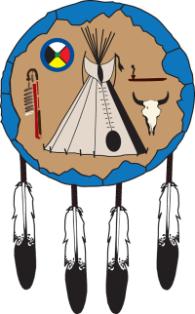During the ’80s and ’90s, the low-fat diet craze changed the way Americans ate, but this may not have been for the better of their health. When fat was taken out of their diets, it was often replaced with sugary foods and refined carbs. This kind of diet could ultimately lead to increasing a person’s triglyceride levels, which can contribute to heart and blood vessel disease. For example, a cookie could be advertised as a “no-fat” cookie but could have the same amount of calories as the regular product, by swapping the fat for sugar.
Eating fat can actually be very healthy for us if you pick the right kinds. The healthy fats are known as monounsaturated fats and polyunsaturated fats. The polys are found in nuts, seeds, fatty fish, and corn, soybean, and safflower oils. This category includes omega-3 and omega-6 fatty acids. The monos can be found in olive and canola oils, avocados, and many nuts and seeds. Consumption of polyunsaturated fats and monounsaturated fats can help reduce LDL (bad) cholesterol and lower the risk for heart disease.
Remember, even if it is a healthy fat, it still has calories, therefore consuming excess amounts of these fats daily would not be recommended to maintain a healthy weight. The bottom line is trying to watch your portions or calories, and limit total fat intake to 25 to 35% of your total daily intake, with most of that coming from healthy fats. Saturated fat should be limited to less than 7% of total calories and trans fat should be limited to less than 1% of total daily calories. For instance, if someone were on a 2,000 calorie diet, then they should consume roughly 56 to 78 grams of total fat, no more than 15 grams saturated fat and less than 2g trans fats.
This heart-healthy recipe would be a perfect appetizer for a New Year’s Eve party!
Season salmon with salt. Heat large sauté pan over medium-high heat; when hot, lightly spray with oil and add the salmon. Cook until browned on one side, about 4 to 5 minutes then turn and cook an additional 4 to 5 minutes or until salmon easily flakes. Set aside on a dish to cool.
Add the olive oil to the pan, then add the onion, celery, bell peppers, parsley, capers, hot sauce, Old Bay seasoning, salt and pepper in a large sauté pan over medium-low heat and cook until the vegetables are soft, approximately 18 to 20 minutes. Set aside to cool to room temperature.
Flake the salmon into a large bowl. Add the bread crumbs, mayonnaise, yogurt, mustard, and eggs. Add the vegetable mixture and mix well. Cover and chill in the refrigerator for 30 minutes, this will make them easier to shape and become less sticky.
Preheat oven to 400 degrees F. Spray a non-stick baking sheet with cooking spray. Shape the batter into 15 cakes and place on prepared baking sheet.
Bake about 10 to 12 minutes on each side, or until golden brown. Enjoy!
Combine all ingredients in a blender and blend until smooth.
Ingredients
Directions
Season salmon with salt. Heat large sauté pan over medium-high heat; when hot, lightly spray with oil and add the salmon. Cook until browned on one side, about 4 to 5 minutes then turn and cook an additional 4 to 5 minutes or until salmon easily flakes. Set aside on a dish to cool.
Add the olive oil to the pan, then add the onion, celery, bell peppers, parsley, capers, hot sauce, Old Bay seasoning, salt and pepper in a large sauté pan over medium-low heat and cook until the vegetables are soft, approximately 18 to 20 minutes. Set aside to cool to room temperature.
Flake the salmon into a large bowl. Add the bread crumbs, mayonnaise, yogurt, mustard, and eggs. Add the vegetable mixture and mix well. Cover and chill in the refrigerator for 30 minutes, this will make them easier to shape and become less sticky.
Preheat oven to 400 degrees F. Spray a non-stick baking sheet with cooking spray. Shape the batter into 15 cakes and place on prepared baking sheet.
Bake about 10 to 12 minutes on each side, or until golden brown. Enjoy!
Combine all ingredients in a blender and blend until smooth.


